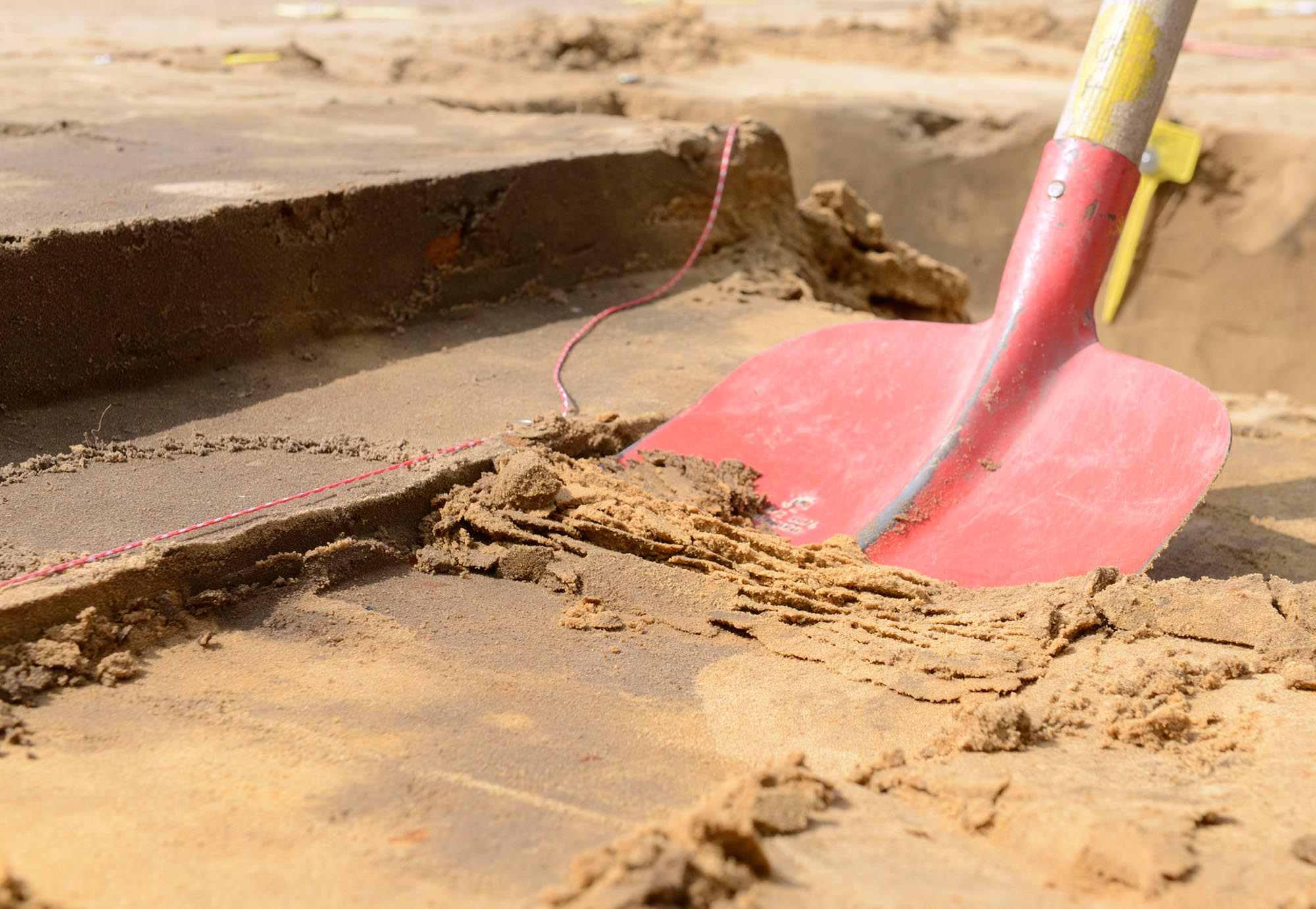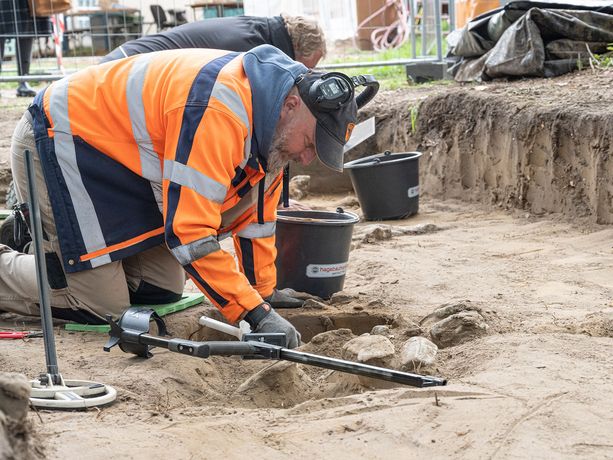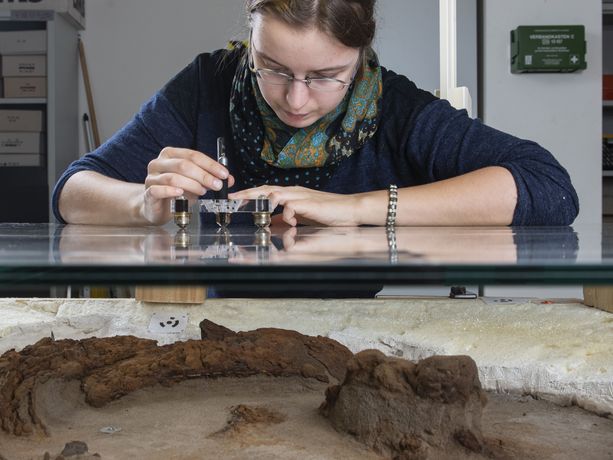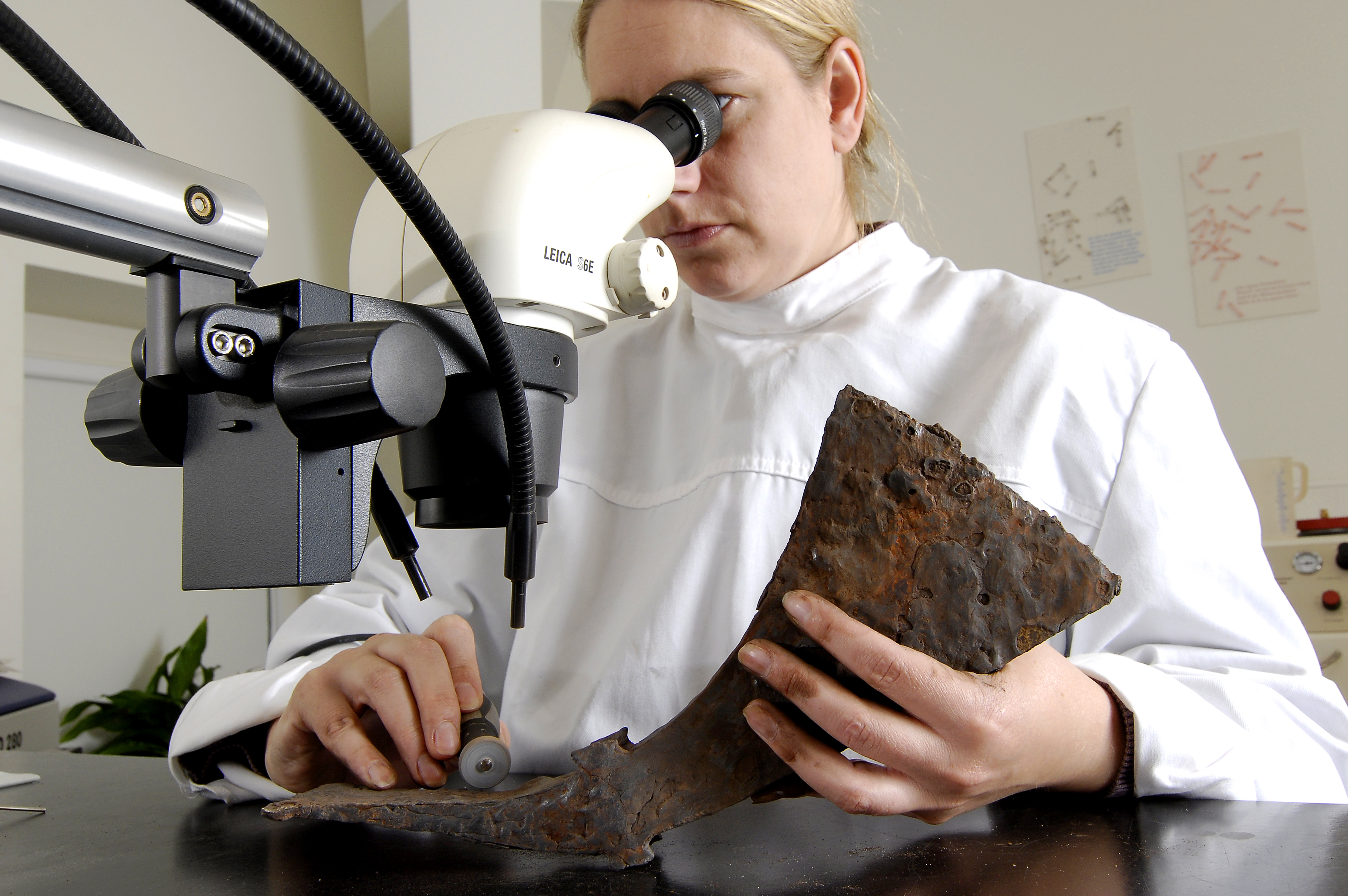Archaeological research on the Varus Battle
The truth lies in the soil. Archaeological methods are used to bring the past to light and make it speak to us.
The search for the site of the Varus Battle went round in circles for 500 years. Based on the very few Roman written sources, attempts were made to localize the site of the historical event. But while Heinrich Schliemann succeeded in finding Troy with the Iliad in his hand, the search for the site of the Varus Battle remained unsuccessful. The texts either led to no location at all – or to discovering too many. Each suggestion remained only conjecture. Only archaeology can shed light on the actual events, leading researchers to the battle site based on excavations. As early as in the 19th century, Kalkriese was also suggested to have been the site of the Varus Battle by none other than Theodor Mommsen, back then an already renowned historian. Yet his thesis could not be confirmed until more than 100 years later.
Since 1989, the Kalkriese region has been the subject of systematic archaeological research; since 1998, this research has been carried out in cooperation with the University of Osnabrück. The Kalkriese archaeology team is searching for clues on an area of 50 km². Thousands of Roman finds speak for themselves in clear words: Roman troops have been crushingly defeated here. Many aspects indicate that this happened in the course of the Varus Battle.
Now, for the first time, there is a concrete site enabling a discussion about the Varus Battle based on facts. The situation is unique for research. How do modern archaeology and the writings of ancient authors fit together? Archaeology provides insights into what happened on site that the texts are silent about. There exists no ancient or historical battlefield which has been similarly well-studied. More than at any other site, here it is possible to study the events that began after the actual fighting had ended: the looting and victory rituals. What probably happened – and still happens – on every battlefield in the world can be examined here, sometimes in great detail. And we are given insights into the equipment of a Roman expeditionary army that hardly any other site has to offer. Here we witness a troop on the march, with their baggage and personal belongings. The looters took most of it with them, but enough remained to support today’s research. And each subsequent excavation can yield new surprises, as the discovery of a Roman lorica segmentata (armor made of metal plates) in 2018 impressively demonstrates. To date, no such complete body armor has ever been found.
Today, Kalkriese is a nationally and internationally renowned research site. We work and research on site in cooperation with numerous other research institutions. Science is in a constant state of change; old knowledge must always be questioned, new methods offer new research opportunities. Research activities at Kalkriese are making progress – and remain exciting.
We will keep providing new insights into our current research here.





